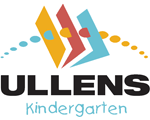
Billingualism
Ullens Kindergarten is a two way dual language program that fosters academic excellence in English and Nepali. Research shows that dual language programs are the most effective bilingual programs. Nepali and English languages are represented equally. The children will progress in their first language and gain knowledge and appreciation of another language and culture.
- Gain an appreciation and an understanding of another culture.
- Develop students who are bilingual, bilateral and bi-cultural.
- Transfer of knowledge and skills acquired in one language to another.
- Develop open-mindedness, critical thinking.
- Develop metalinguistical consciousness.
NWREL Report 2008
1 / Pre-production: (Approximate time frame: 0 to 6 months)
- Students don’t communicate in the second language
2 / Early production (Approximate time frame 6-12 months)
- Students speak simple words or phrases and understand more than they can produce.
3 / Speech emergence (Approximate time frame 1-3 years)
- Students begin to communicate using sentences in the second language, though with some grammatical and pronunciation errors.
- Students understand more spoken English/Nepali, sometimes needing visual or physical supports in addition to language
4 / Intermediate fluency (Approximate time frame 3- 5 years)
- Students have excellent comprehension and make few grammatical errors.
5 / Fluency (Approximate time frame 5-7 years)
- Students use English to express a wide range of thoughts and feelings.
- Grammar is increasingly comparable to same-age native speaking peers.
( Linda M. Espinosa, Challenging common myths about teaching young English
language learners, Foundation for child development, 2008 )
1 / Learning two languages during early childhood will overwhelm, confuse or delay the child acquisition in his first language.
“ Recent research suggests that the development of two languages benefits the brain through the development of greater brain tissue density in areas related to language, memory, and attention.Young children learning two languages also have more neural activity in the parts of the brain associated with language processing.This increased brain activity and neural density may have long-term positive effects on specific types of cognitive abilities, such as those that require focusing on the details of a task and knowing how language is structured and used.”
“Systematic, deliberate exposure to English during early childhood combined with ongoing opportunities to learn important concepts in the home language results inthe highest achievement in both the home language and English by the end of ThirdGrade and beyond.”
2 / Native speakers in English or Nepali will experience academic delays if enrolled in a dual language program.
“ In fact, recent evaluations show that the dual language approach is effective for both ELL students and for native English speakers. Dual language programs educate all children in two languages. The goal is to promote bilingualism and biculturalism for all students. In these classrooms, all students experience the benefits and challenges associated with learning a second language during the early childhood years as well as the richness of being introduced to many cultures and social customs.”

